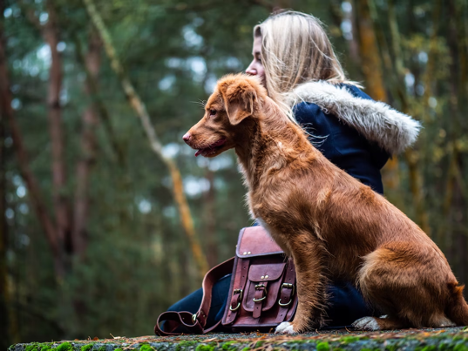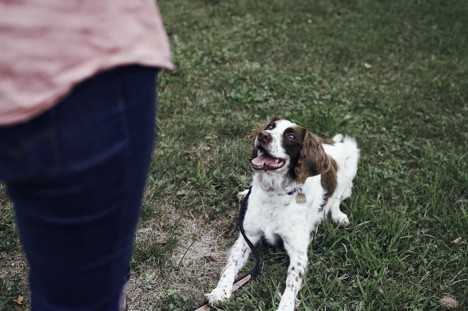Training a dog is one of the most rewarding tasks for any pet owner. Not only does it provide an opportunity to bond with your pup and create a strong relationship, but it also sets them up for success in everyday life. Whether you’re teaching them basic commands or more advanced tricks, training your dog can be an incredibly fulfilling experience. That said, there are many different approaches to training dogs and what works for one pup may not work for another. To help make sure that you get the best results from your canine friend, we’ve put together pieces of top advice on how to train your dog!
Connect with a verified veterinarian in minutes. Licensed vets are available 24/7 to answer your questions. No need to worry about your furry family member.
Start While They’re Young
The best time to start training your pup is when they are still young and impressionable. Puppies learn things faster than adult dogs, so it’s important to instill good habits while they’re still in their formative years. Plus, the younger you start, the easier it will be for your dog to pick up on commands and understand what you want them to do. Recently there’s been a rise in brain training for dogs because of its effectiveness in teaching them new skills quickly and efficiently. A dog’s brain requires stimulation just like ours, and brain training can help them stay focused, alert, and engaged.
Use Positive Reinforcement
Positive reinforcement is an incredibly effective training method that encourages desired behaviors by rewarding your dog with something they love. This could be treats, toys, praise, or anything else that you know your pup responds to positively! You should also avoid punishing or scolding your pup for mistakes as this will not only discourage them from trying again but may lead to behavioral issues down the line. Instead, use positive reinforcement to let them know when they’ve done something right and reward them for their efforts.
Try Not To Yell
Yelling or punishing your pup won’t get you the desired results. Instead, take a step back and redirect their behavior in a positive way when they do something wrong. This will help them to understand what is expected of them without feeling threatened or demoralized. Don’t forget to reward good behavior with treats, toys, or praise to keep them motivated.

Review symptoms, medications & behavior to keep your pets healthy with a Vet Online in just minutes.
Ask a Vet Live NowBe Consistent
Consistency is key when it comes to training your pup. Making sure that you keep the same routine, language, and commands will help them to pick up on what you’re asking of them much more quickly. As such, everyone who interacts with your dog must be following the same training approach so that they don’t become confused. For example, if you’re teaching your pup to sit, everyone should use the same verbal command so that they don’t get mixed up and end up following contradictory instructions. Additionally, it’s important to be consistent with the rewards you provide during training sessions. This helps ensure that your pup understands which behaviors are desired and will motivate them to continue following instructions. Establishing a consistent pattern of rewards and reinforcement will also help them to feel secure and connected with you as their trainer.
Break Training Up into Short Sessions
The best way to ensure success in training your pup is by breaking things up into short sessions. Dogs have a limited attention span and can quickly become bored or frustrated if asked to do too much at once. To avoid this, try keeping each session to around 10 minutes and focus on one command at a time until they’ve got it down pat. This will help keep their energy levels up as well as prevent burnout.
Be Patient
Training a pup takes time, so it’s important to remain patient throughout the process. Your dog won’t pick up on commands and tricks overnight, but if you stay consistent with your approach and practice patience, you’ll eventually get the results you desire. Additionally, positive reinforcement is an excellent tool for boosting motivation and reinforcing good behavior. If patience isn’t your strong suit, seek out the help of a professional dog trainer who can answer any questions you may have and provide guidance on how to succeed. With patience, dedication, and consistency, your pup will soon be responding promptly to commands and eager to learn new things.
Make Training Fun
One of the best ways to keep your pup engaged in training is by making it fun. Incorporate games into each session or reward them with treats when they do something right – whatever works best for your pup! Also remember that dogs learn better when they’re relaxed and having a good time, so be sure to praise them throughout the process. Always make sure that each training session ends with your pup doing something right. This will reinforce the positive behavior you’re trying to teach them and ensure they end the session feeling accomplished! You can then use treats or toys as rewards for a job well done and help keep their enthusiasm alive for next time.
Mix Things Up
Dogs can become bored quickly if asked to do the same thing over and over again, so it’s important to mix up each training session with new challenges. Try introducing different commands or activities into each session to keep your pup interested and engaged – you may even discover some hidden talents. For example, if your pup is particularly good at agility exercises, you can use this to your advantage by introducing more complex tasks for them to complete.
Buy Toys And Props
Buying toys and props specifically for training sessions can help keep your pup engaged and give them an added sense of accomplishment. This can be anything from agility equipment to treat dispensers – the possibilities are endless! Just make sure that whatever you buy is age and size-appropriate so that it’s safe for your pup to use. Props such as toys and agility equipment can also help to break up the monotony of regular commands and keep your pup’s attention for longer.
These are just some of the tips to keep in mind when training your pup. With patience, consistency, and lots of positive reinforcement, you’ll be well on your way to having a well-mannered pup in no time. And the best thing is that the process can be fun and rewarding for both you and your pup!
Connect with a verified veterinarian in minutes. Licensed vets are available 24/7 to answer your questions. No need to worry about your furry family member.

Tom
Tom has always loved to write since he was little - he wanted to be either a writer or a veterinary doctor, but he ended up being a professional writer while most of his works are based on animals. He was born in San Francisco but later moved to Texas to continue his job as a writer. He graduated from the University of San Francisco where he studied biotechnology. He is happily married and a soon to be father!
Review symptoms, medications & behavior to keep your pets healthy with a Vet Online in just minutes.
Ask a Vet Live Now


